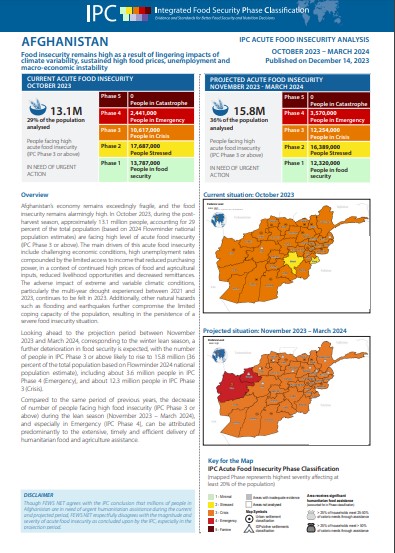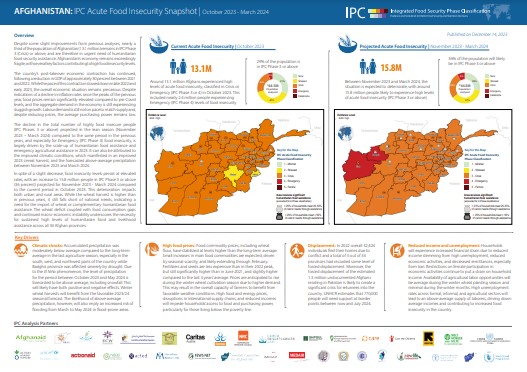
- © OCHA
AFGHANISTAN: 13.1 million people experience high levels of acute food insecurity in October 2023 driven by climatic shocks, macro-economic instability and unemployment
Afghanistan’s economy remains exceedingly fragile, and the food insecurity remains alarmingly high. In October 2023, during the post-harvest season, approximately 13.1 million people, accounting for 29 percent of the total population faced high levels of acute food insecurity (IPC Phase 3 or above).
The main drivers of this acute food insecurity included challenging economic conditions, high unemployment rates compounded by the limited access to income that reduced purchasing power, in a context of continued high prices of food and agricultural inputs, reduced livelihood opportunities and decreased remittances. The adverse impact of extreme and variable climatic conditions, particularly the multi-year drought experienced between 2021 and 2023, continues to be felt in 2023. Additionally, other natural hazards such as flooding and earthquakes further compromised the limited coping capacity of the population, resulting in the persistence of a severe food insecurity situation.
In the projection period, between November 2023 and March 2024 (corresponding to the winter lean season) a further deterioration in food security is expected, with the number of people in IPC Phase 3 or above likely to rise to 15.8 million (36 percent of the total population), including about 3.6 million people in IPC Phase 4 (Emergency), and about 12.3 million people in IPC Phase 3 (Crisis).
Compared to the same period of previous years, the decrease of number of people facing high food insecurity (IPC Phase 3 or above) during the lean season (November 2023 – March 2024), and especially in Emergency (IPC Phase 4), can be attributed predominantly to the extensive, timely and efficient delivery of humanitarian food and agriculture assistance.
Join our mailing list


